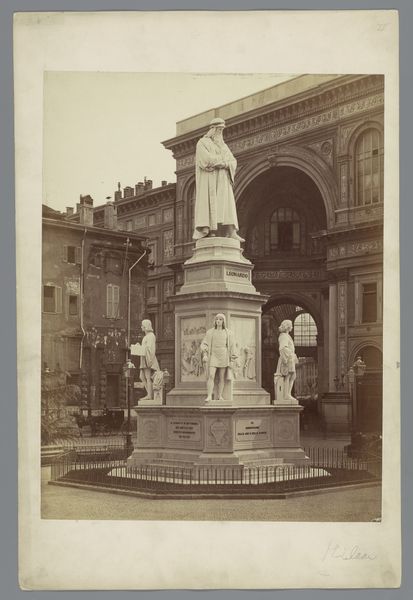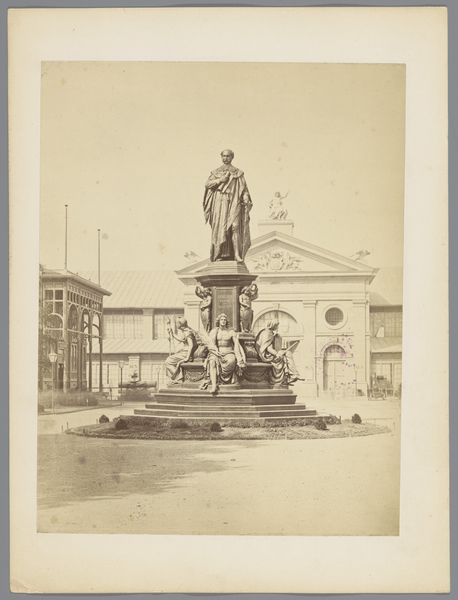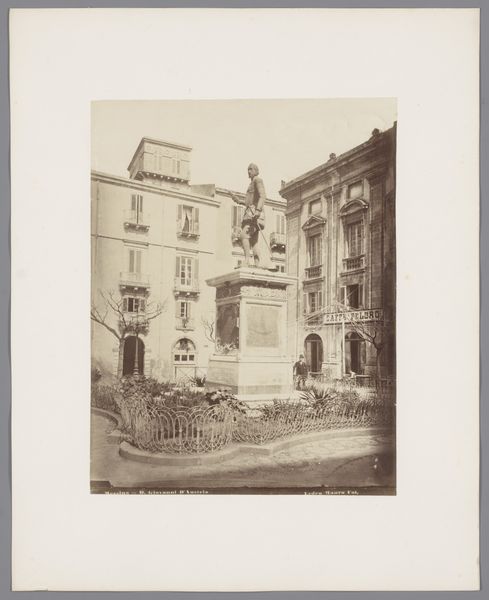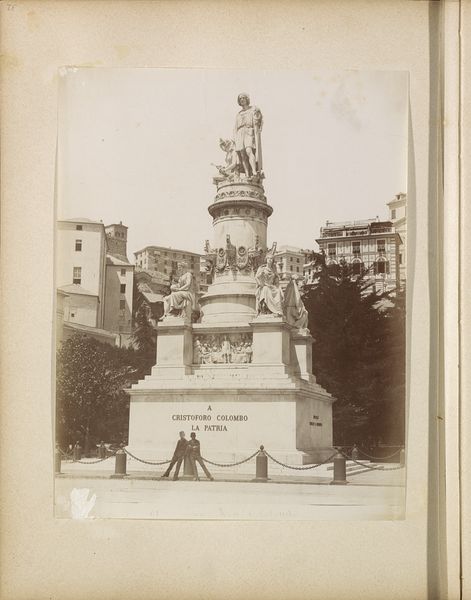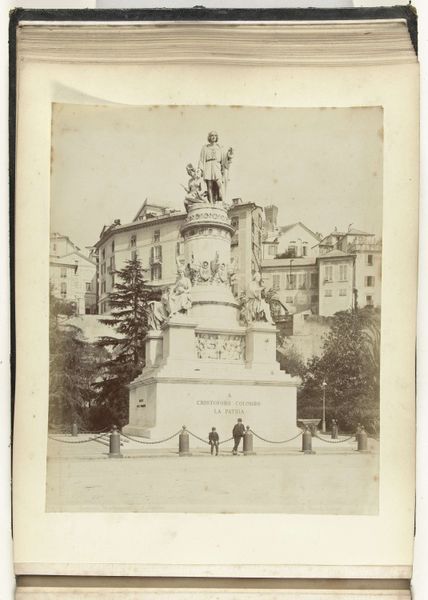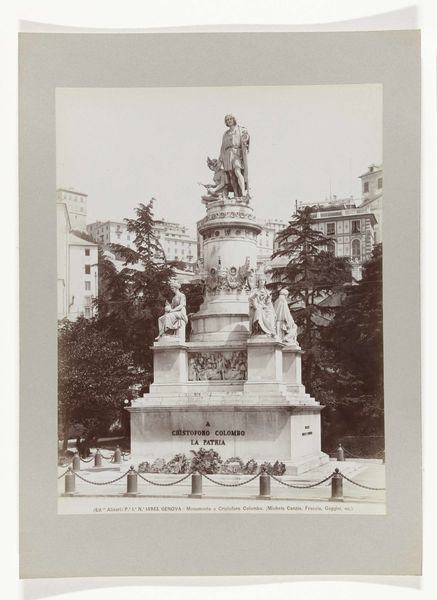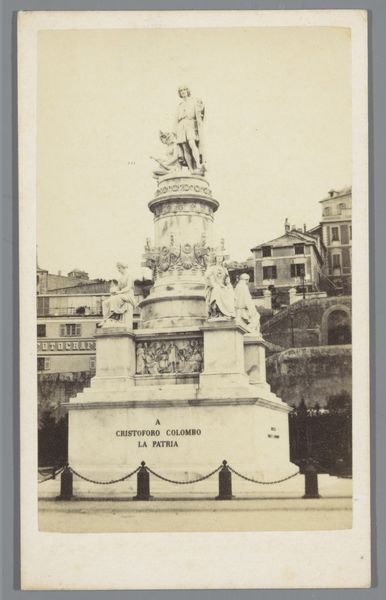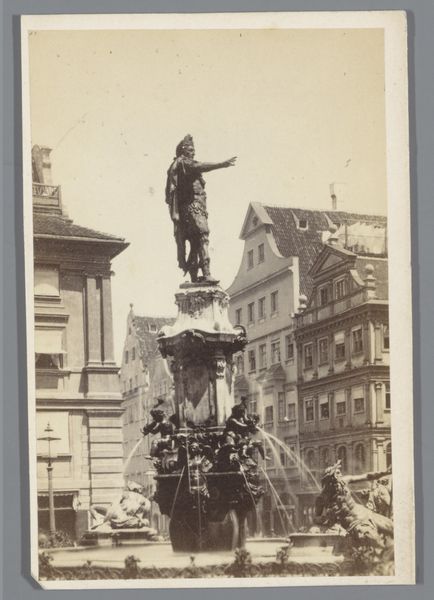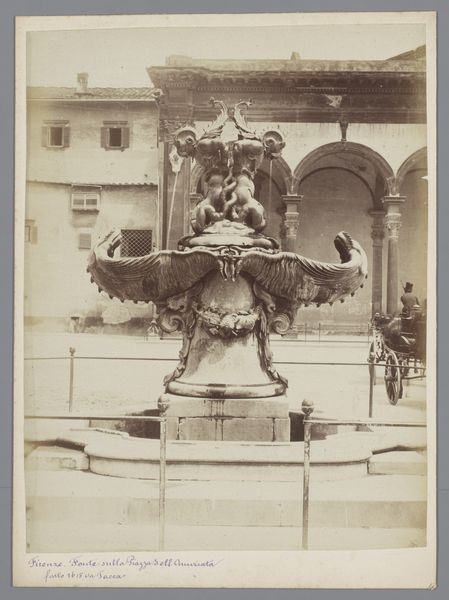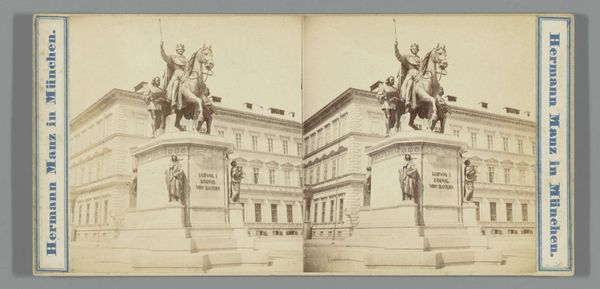
Gezicht op de Neptunusfontein van Giambologna op de Piazza del Nettuno in Bologna c. 1870 - 1890
0:00
0:00
Dimensions: height 262 mm, width 195 mm
Copyright: Rijks Museum: Open Domain
Editor: This is a gelatin-silver print, circa 1870-1890, showing the Fountain of Neptune in Bologna. It evokes such a strong sense of place. What do you see in this piece, beyond just a snapshot of a famous landmark? Curator: It’s more than just a cityscape, it’s a potent symbol embedded within layers of social and political meaning. Consider the representation of Neptune himself. His masculinity, his power—how does it reflect the societal norms of the time, and how might it reinforce existing power structures? Editor: I guess I hadn’t really thought about the statue as anything beyond art or civic pride. So you are thinking about gender and power, immediately? Curator: Precisely. Who does this monument serve, and whose stories are excluded in its grand narrative? The idealized male form dominating the composition…what does that say about whose bodies and voices mattered then, and often still do? Consider also, this image comes at a time of nation building in Italy. How does the classical imagery play into that project? Editor: That makes me think about how public art is still used to project authority today. I mean, whose history gets immortalized in bronze, right? Curator: Exactly! The choice of Neptune, a figure of strength and control, is no accident. This photograph freezes a moment in a carefully constructed performance of power, intended to project a specific vision of civic identity and historical legitimacy. Does thinking about it this way change how you respond to the image? Editor: Definitely. I will never look at a public monument the same way again! It's not just about aesthetics, but about power dynamics made visible. Curator: Indeed! The photograph then becomes a site of inquiry rather than just passive appreciation. A lens through which to examine the social fabric of Bologna, Italy, and even the world, through an intersectional perspective.
Comments
No comments
Be the first to comment and join the conversation on the ultimate creative platform.

